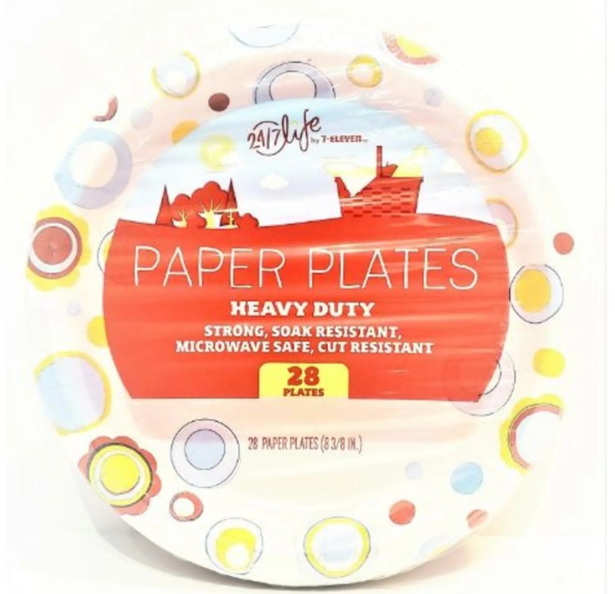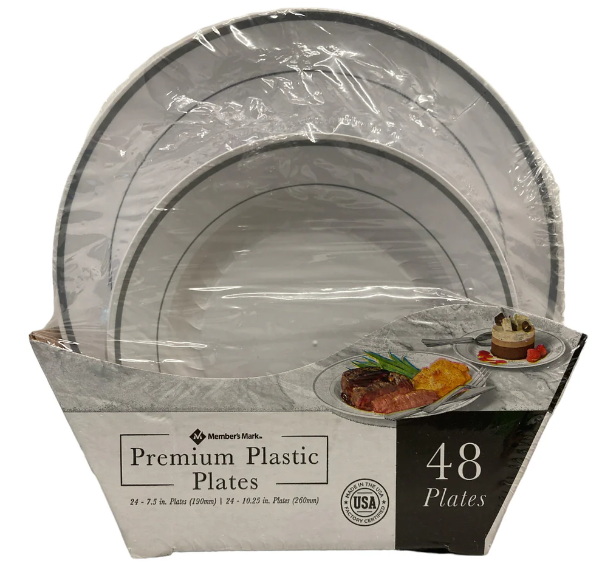
Content Menu
● Introduction to Disposable Plates
>> Traditional Materials
● Eco-Friendly Alternatives at Sams Club
>> Compostable Plates
>> Sams Club Eco-Friendly Options
● Environmental Impact of Sams Club Disposable Plates
>> Production Process
>> Disposal and Recycling
● Alternatives to Disposable Plates
>> Reusable Plates
>> Benefits of Reusable Plates
● Consumer Behavior and Awareness
>> Impact of Consumer Choice
>> Role of Education
● Future Trends in Disposable Plates
>> Innovative Materials
>> Circular Economy Practices
● Conclusion
● FAQs
>> 1. What Materials Are Sams Club Disposable Plates Made Of?
>> 2. Are All Sams Club Disposable Plates Compostable?
>> 3. How Do I Dispose of Compostable Plates from Sams Club?
>> 4. Are Sams Club Eco-Friendly Plates More Expensive Than Traditional Ones?
>> 5. Can I Use Sams Club Disposable Plates for Hot Foods?
In recent years, the importance of eco-friendliness and sustainability has become increasingly prominent in consumer choices. When it comes to disposable plates, many people are looking for options that not only offer convenience but also align with their environmental values. Sams Club, a popular membership-based warehouse club, offers a variety of disposable plates, including both traditional and eco-friendly options. This article will delve into the eco-friendliness and sustainability of Sams Club disposable plates, exploring their materials, environmental impact, and alternatives.

Introduction to Disposable Plates
Disposable plates have been a staple in many households and events due to their convenience and ease of use. However, their environmental impact cannot be ignored. Traditional disposable plates are often made from materials like plastic, paper, or styrofoam, which have significant environmental drawbacks.
Traditional Materials
- Plastic Plates: Made from fossil fuels, plastic plates contribute to greenhouse gas emissions and can take hundreds of years to decompose, breaking down into microplastics that harm wildlife and ecosystems. The production process of plastic plates involves extracting and refining petroleum, which further exacerbates environmental issues.
- Paper Plates: While seemingly more eco-friendly, many paper plates are coated with chemicals like PFAS (Forever Chemicals) to enhance durability, which can harm human health and the environment. These chemicals are also resistant to biodegradation, posing long-term environmental risks.
- Styrofoam Plates: Known for their long decomposition time and harmful production process, styrofoam plates are generally considered the least eco-friendly option. The manufacturing of styrofoam involves the use of chlorofluorocarbons (CFCs), which contribute to ozone depletion.
Eco-Friendly Alternatives at Sams Club
Sams Club offers several eco-friendly disposable plate options, catering to consumers seeking more sustainable choices.
Compostable Plates
Compostable plates are made from materials like sugarcane bagasse, bamboo, or palm leaves. These plates are biodegradable, breaking down into nutrient-rich soil in a few months, making them a more sustainable alternative to traditional disposable plates. The production of these plates often involves renewable resources and minimal chemical use, reducing their environmental footprint.
Sams Club Eco-Friendly Options
While Sams Club primarily offers traditional disposable plates, they also provide some eco-friendly alternatives, such as compostable containers for various purposes. However, the availability of these specific eco-friendly plates may vary by location and season. Consumers can check their local Sams Club stores or online platforms for the latest offerings.
Environmental Impact of Sams Club Disposable Plates
The environmental impact of Sams Club disposable plates largely depends on the material used. Traditional materials like plastic and styrofoam have significant environmental drawbacks, while eco-friendly options offer a more sustainable alternative.
Production Process
The production of traditional disposable plates involves processes that contribute to pollution and resource depletion. In contrast, eco-friendly materials like bamboo require less water and no fossil fuels, making them more sustainable. The use of renewable resources in eco-friendly plate production helps reduce greenhouse gas emissions and supports sustainable agriculture.
Disposal and Recycling
Most disposable plates end up in landfills, where they can take centuries to decompose. Eco-friendly options, when properly composted, can enrich soil and reduce waste. However, the lack of widespread composting facilities can limit the effectiveness of compostable plates. Consumers should ensure that these plates are disposed of in appropriate facilities to maximize their environmental benefits.

Alternatives to Disposable Plates
For those seeking to reduce their environmental footprint further, alternatives to disposable plates include reusable options.
Reusable Plates
Reusable plates made from materials like ceramic, glass, or stainless steel offer a sustainable solution. While they require washing, they can be used multiple times, significantly reducing waste. The initial cost of reusable plates may be higher, but their long-term use can be cost-effective and environmentally friendly.
Benefits of Reusable Plates
- Durability: Reusable plates are designed to withstand repeated use and cleaning, making them a durable option for frequent events or daily use.
- Cost-Effective: Although the initial purchase price may be higher, reusable plates can save money in the long run by eliminating the need for disposable plates.
- Environmental Benefits: By reducing the demand for disposable plates, consumers can significantly decrease their contribution to waste and pollution.
Consumer Behavior and Awareness
Consumer awareness plays a crucial role in driving demand for eco-friendly products. As more consumers prioritize sustainability, companies like Sams Club are likely to expand their eco-friendly offerings.
Impact of Consumer Choice
Consumer choices can influence market trends and encourage companies to adopt more sustainable practices. By choosing eco-friendly disposable plates or opting for reusable options, consumers can contribute to a reduction in environmental pollution and support sustainable manufacturing practices.
Role of Education
Educating consumers about the environmental impact of their choices is essential. Awareness campaigns and product labeling can help consumers make informed decisions about the products they purchase. Sams Club and similar retailers can play a significant role in promoting eco-friendly products by highlighting their benefits and availability.
Future Trends in Disposable Plates
The future of disposable plates is likely to see a shift towards more sustainable materials and production methods. As technology advances, new eco-friendly materials and manufacturing processes are being developed.
Innovative Materials
Researchers are exploring new materials that are both biodegradable and durable. For example, plates made from mushroom-based materials or seaweed are being developed as sustainable alternatives. These innovative materials could further reduce the environmental impact of disposable plates.
Circular Economy Practices
Companies are adopting circular economy practices, focusing on recycling, reusing, and reducing waste. This approach can lead to more efficient use of resources and minimize the environmental footprint of disposable plates.
Conclusion
Sams Club disposable plates, while convenient, vary in their eco-friendliness depending on the material. Traditional materials like plastic and styrofoam have significant environmental impacts, while eco-friendly alternatives offer a more sustainable choice. Consumers can opt for compostable plates or consider reusable options for a more environmentally friendly approach. As consumer awareness and demand for sustainable products grow, retailers like Sams Club are likely to expand their eco-friendly offerings.

FAQs
1. What Materials Are Sams Club Disposable Plates Made Of?
Sams Club disposable plates are primarily made from plastic, paper, and sometimes eco-friendly materials like sugarcane bagasse or bamboo. The exact material can vary depending on the product.
2. Are All Sams Club Disposable Plates Compostable?
No, not all Sams Club disposable plates are compostable. While they offer some eco-friendly options, many of their plates are made from traditional materials that are not compostable.
3. How Do I Dispose of Compostable Plates from Sams Club?
Compostable plates should ideally be disposed of in a commercial composting facility to ensure they break down efficiently. If such facilities are not available, they can be discarded with yard debris.
4. Are Sams Club Eco-Friendly Plates More Expensive Than Traditional Ones?
Generally, eco-friendly plates can be more expensive than traditional disposable plates. However, prices can vary based on the specific product and brand.
5. Can I Use Sams Club Disposable Plates for Hot Foods?
Yes, many Sams Club disposable plates, especially those made from eco-friendly materials like bamboo, can handle hot foods. However, it's always best to check the product specifications.

















